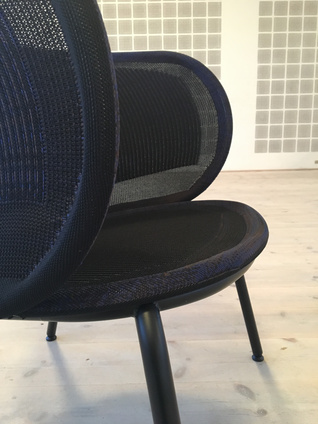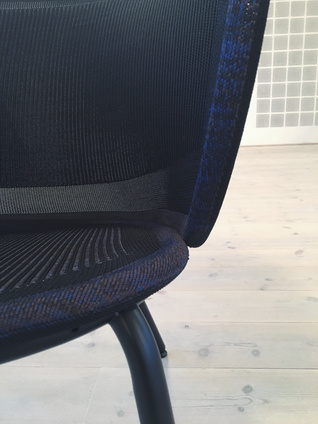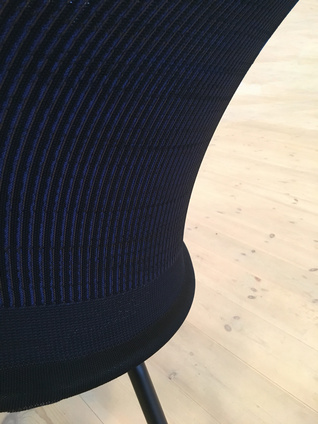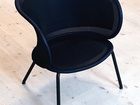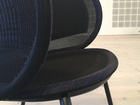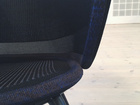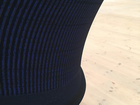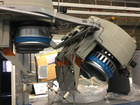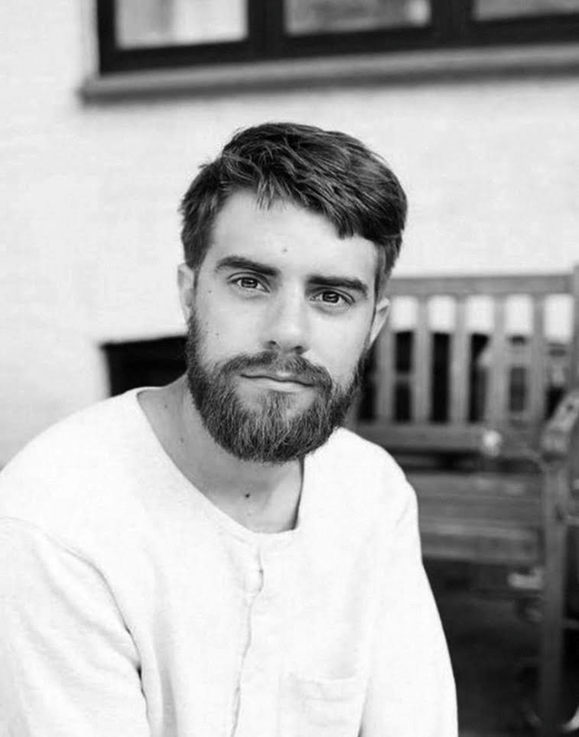As technology evolves, old-fashioned craftsmanship can suddenly become relevant again. On modern knitting machines we can manufacture precisely customised 3D polyester textiles. This paves the way for new applications of knitted textiles. Meet the designer, Christian Juhl Christensen. In his final project he collaborated with HAY and Camira to create a 3D knitted lounge chair.
What is your final project about?
My final project is called ‘Technical Knitting - A Lounge Chair for HAY’. Together with the British textile giant, Camira Fabrics, I designed a furniture concept targeted at the HAY product universe. My furniture concept is based on the use of technical 3D knitting, which has discovered new applications thanks to technological development.
Compared to traditionally manufactured woven fabrics, technical knitting enables you to design textiles with a customised shape and strength in a working process, in which no materials are wasted. The knitted fabric also consists of 100% polyester, which, when it has passed its service life, can be melted down and reformed into new polyester fibres.
What was your motivation for this project in particular?
My personal curiosity about the material was the driving force behind the project. Technical knitting challenges our notion of textiles used in the furniture industry, and that paves the way for all sorts of new applications.
The project was also inspired by my desire to learn about product design in the furniture industry.
How did collaboration with benefit your working process?
I worked together with Camira to make samples of knitted fabrics prior to making a knitted prototype. I also had the great privilege of holding close discussions with HAY about the options provided by their manufacturing machinery. They also funded the final prototype of the Chair. The feedback I gained from Camira and HAY lent a new dimension to my project. I gained an insight into the challenges and tasks, for which a designer is responsible in a design/development process, and into the interaction that takes place between a designer and a manufacturer.
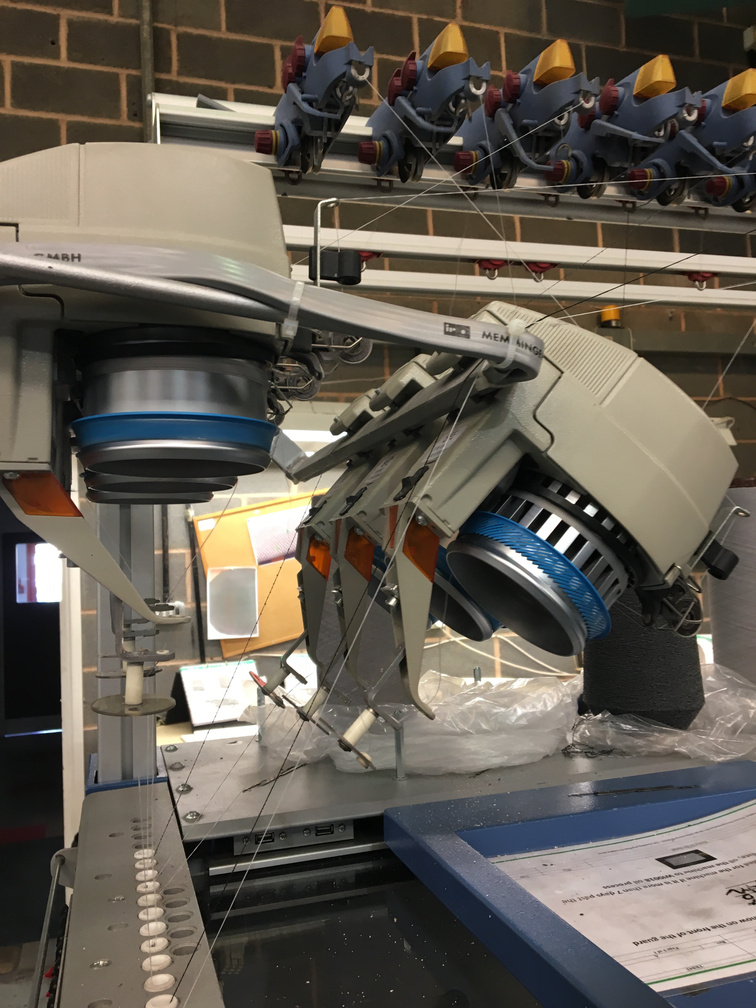
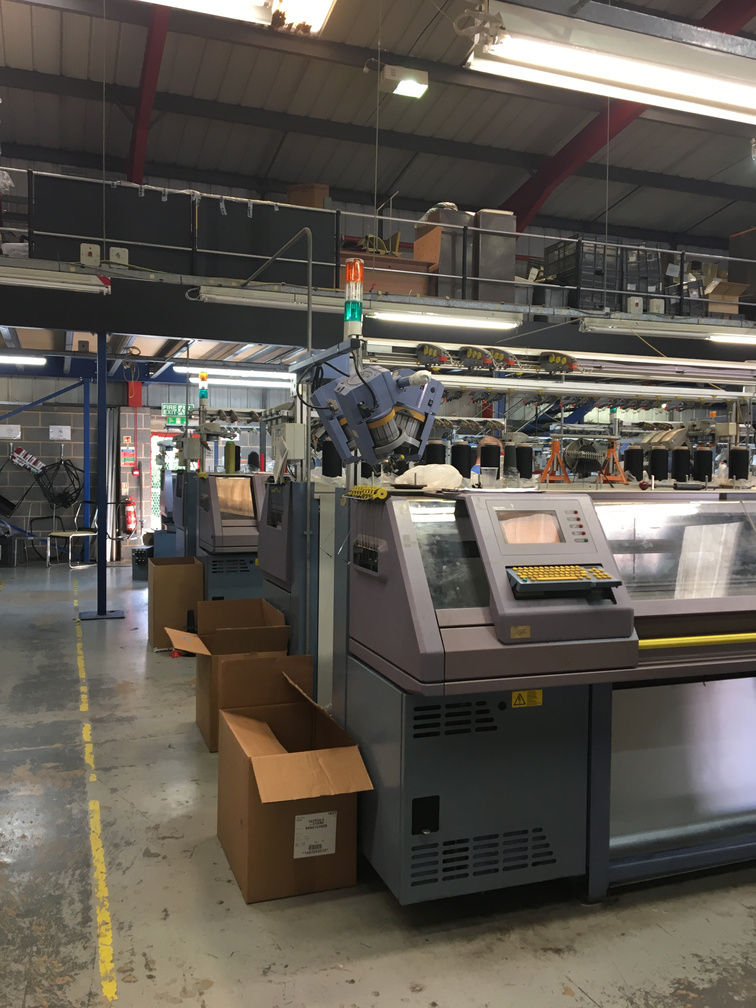
What are the most enjoyable and the most difficult aspects of designing the way you do?
Working with technical knitting is difficult. Not also does it require a general understanding of the actual knitting method, but also, and especially, of how the nature of the individual types of stitches affects the structure of the membrane, which knitting is usually involved in: in this case the seat and back of the chair. Another of the challenges posed by the project was to design the knitted membrane and construct a chair, where the support is provided by the knitted fabric alone. The person sitting in the chair has no contact with the tubular frame.
What do you think is your greatest strength as a KADK design graduate?
Throughout my studies at KADK I was careful to formulate my projects in such a way that every project provided me with knowledge of new materials and new industrial processing methods. I hope this knowledge better equips me for a career as a designer and for the challenges you face when you collaborate with a manufacturer.



